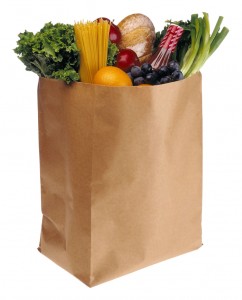
For the last couple of weeks, we’ve been looking at how you can help provide life skills for teenagers – the first was by giving them tips for when they go food shopping and last week we suggested an activity to help them stay within a food budget.
This week continues on that theme by helping youth combine the skills they’ve learned in those two sessions with knowing how to plan meals. (n.b. We’ve also published another meal planning session plan in the past, so use that to help give some additional tips).
Weekly meal plan
Have your young people make a list of all the different foods they like. Once they’ve done this, give them a print-off of a calendar month and have them allocate different meals to different days. If you want to start off easy, you could just have them schedule a week’s worth of food; if you’re feeling ambitious, go for 2 – 4 weeks.
Ensure that they plan breakfast, lunch and dinner, along with snacks they may like to have during the day. Remind them to also include beverages.
Ingredients
For the next stage, give each young person some post-it notes or pad of paper. Have them research online all of the ingredients they’ll need for each meal – sites like allrecipes.com are useful for this. On each post-it note or sheet of paper, they should write the name of the meal and the ingredients needed (including size/weight/number of ingredients).
Let them know that many recipes will be based on feeding 4 or more people, so they may need to adjust ingredient sizes accordingly – have some calculators on hand to help with this. Suggest that making larger portion sizes may be no bad thing though, as they can freeze down leftovers for future meals.
Shopping List
Now that they’ve identified all the ingredients needed for their meals, it’s time to collate them in a shopping list. To help them, offer the following tips:
- Include size/weight/number of items that you’ll need
- Don’t duplicate items. For example, many recipes will require cooking oil, but they’ll only need to buy one bottle, rather than one bottle for each recipe
- Remember to include beverages
- Where possible, try to group similar food types together as this will speed up the shopping trip. For example, try to list fruit and vegetables together, rice and pasta together, frozen foods together, etc.
Shopping Trip
For this next stage, give the youth a hypothetical (but realistic) amount of money that they get to spend on food for the week/month. Take them to a grocery store with their lists and have them shop for all the items they need, but don’t put the products in a shopping cart (unless you want to put all the items back afterwards!).
Provide each of them with a calculator. The objective is for them to total up the cost of their meal ingredients and to compare to the budget you’ve given them.
If they stay within the budget, great! If not, ask them what they think they can do to lower the amount they’re spending on food. If you’ve run the previous session on grocery shopping, they’ll probably put two and two together and try to find some cheaper brands. Another option they may have would be to find cheaper cuts of meat.
Spend Money To Save Money
A further suggestion could be that they might need to spend money to save money. For example, it might cost $16 to make a giant batch of chili, or they could spend $10 on two frozen pizzas. On the face of it, the chili looks like the more expensive option. However, if the batch makes 8 portions, each meal effectively only costs $2. This means that for the cost of eating pizza twice, they could afford to eat chili five times.
If a trip to the grocery store isn’t feasible for your youth work program, are you able to help them research the cost of the items online? This isn’t really an option here in the US where ordering groceries online is still in its infancy. In the UK though, you could have the young people set up an account on the Tesco website, enabling them to check food prices quickly and easily.
Question: What else would you include in a session on how to help teenagers plan meals? We’d love to hear your suggestions in the comments below.
You can also connect with us by:
- Signing up to receive our posts via email
- Following us on Twitter
- Liking us on Facebook
- Signing up to our RSS feed